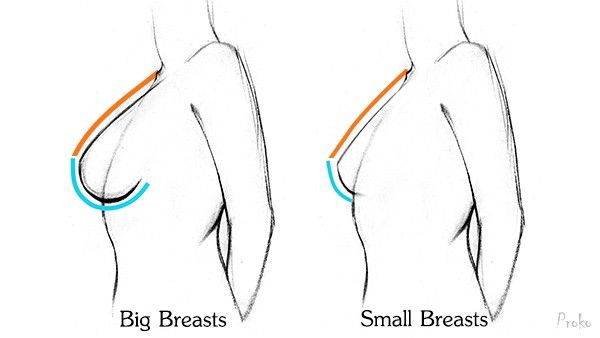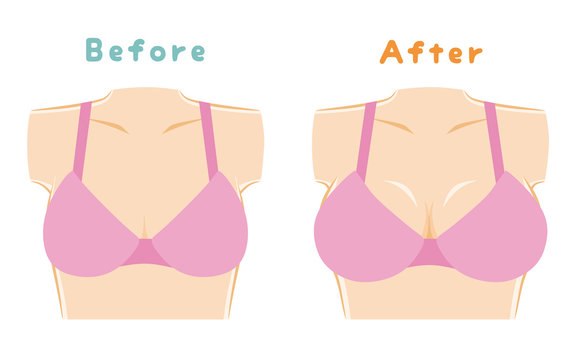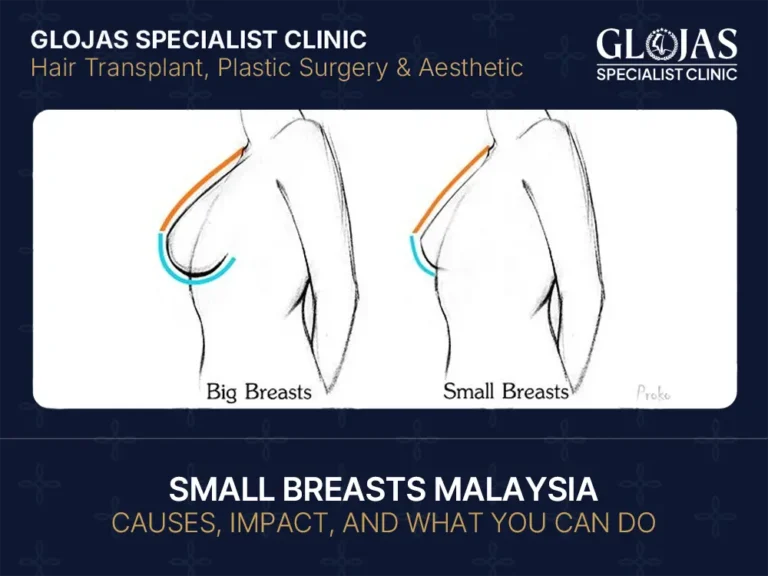Breast size varies widely among women, and having small breasts is a natural variation. While some women embrace their small breasts, others may feel self-conscious or explore ways to enhance their appearance. Understanding the causes, effects, and available options can help women feel informed and confident about their bodies.
What Are Small Breasts?

Small breasts, medically referred to as hypomastia, describe breasts that are smaller in proportion to a woman’s body. This can range from slightly smaller than average to underdeveloped breasts that appear flat. Breast size is influenced by a combination of genetics, hormones, lifestyle, and overall body composition.
It is important to recognize that breast size alone does not define beauty or femininity. Women with small breasts are healthy and normal, and variations in breast size are common worldwide.
How to Determine If You Have Small Breasts
There is no strict medical cutoff for “small breasts,” as size is subjective and varies based on body frame, age, and personal perception. In many countries, bra band sizes range widely (e.g., 26–64 in the UK), with cup sizes from AA to M. Factors such as ethnicity, BMI, and age all influence what is considered small.
Women who feel their breasts are proportionally smaller than average or underdeveloped may identify with having small breasts, but this does not imply any health issue.
Factors That Influence Small Breasts Size
1. Genetics
Genetics is one of the most significant determinants of breast size. Women whose close relatives have small breasts are more likely to have small breasts themselves. This is due to inherited differences in glandular tissue, fat distribution, and overall breast volume.
2. Hormonal Levels
Hormones, particularly estrogen and progesterone, are essential for breast development. Low hormone levels during puberty can lead to underdeveloped breasts. Conditions like polycystic ovary syndrome (PCOS) or other hormonal imbalances can also influence breast size.
3. Body Composition
Breasts are largely composed of fatty tissue. Women with lower body fat percentages may naturally have smaller breasts. Similarly, significant weight loss can reduce breast size, while weight gain may increase it, depending on individual body composition.
4. Age and Life Stages
Breast size changes across life stages. During puberty, breasts develop under hormonal influence. Pregnancy and breastfeeding can increase breast volume temporarily, and menopause may lead to size reduction due to hormonal changes.
5. Diet and Nutrition
Nutrition during developmental years plays a role in overall growth, including breast development. Poor nutrition can limit development, whereas a balanced diet rich in essential nutrients supports healthy growth.
Psychological and Social Impacts of Small Breast
Breast size can influence a woman’s body image and self-esteem. Some common psychological and social impacts include:
Self-consciousness in social or intimate settings
Comparison to societal ideals, often influenced by media
Pressure to conform to perceived standards of beauty
It is essential to understand that confidence and attractiveness are not determined by breast size, and many women with small breasts embrace and celebrate their natural bodies.
Non-Surgical Approaches to Enhancing Small Breasts
Women who wish to improve the appearance of small breasts without surgery can consider several options:
1. Padded or Push-Up Bras
Specialty bras can enhance the appearance of small breasts instantly. Padded bras, push-up bras, and silicone inserts create the illusion of fuller breasts and can improve overall body proportion.
2. Exercise
Strengthening the pectoral muscles beneath the breasts through chest presses, push-ups, and other targeted exercises can improve breast firmness and lift, though they will not increase actual breast size.
3. Nutrition and Lifestyle
Maintaining a healthy, balanced diet can support natural body development. While diet alone cannot significantly change breast size, overall body health may enhance natural curves and tissue tone.
4. Hormonal Support
In rare cases where breast size is influenced by hormonal imbalance, medical advice may include hormonal treatments. These should always be guided by a healthcare professional.
Surgical and Medical Options To Enlarged Breasts Size

For those seeking more permanent enhancement, several medical options exist:
1. Breast Augmentation
Breast implants are a surgical solution to increase size and improve shape. Implant options vary in size, material, and placement, offering a customizable outcome.
2. Fat Transfer Breast Augmentation
This technique uses fat harvested from other parts of the body (e.g., abdomen or thighs) to enhance breast size naturally. The result is often more subtle and natural-looking compared to implants.
While surgical options are effective, they carry potential risks and require consultation with a qualified medical professional.
Embracing Small Breasts
For many women, confidence comes from accepting and loving their natural body. Emphasizing self-esteem, practicing positive self-talk, and surrounding oneself with supportive communities can improve body image and personal comfort with small breasts.
FAQs About Small Breasts
Q1: What is considered a small breast size?
A: Small breasts are subjective and vary by body frame and cultural norms. Generally, AA or A cup sizes are considered small, but perception depends on individual proportion.
Q2: Can small breasts become larger naturally?
A: Minor changes may occur due to weight gain, hormonal changes, or pregnancy, but genetics largely determines natural breast size.
Q3: Are small breasts less healthy than larger breasts?
A: No. Breast size does not indicate health. Small breasts are completely normal and pose no health risks.
Q4: What are the non-surgical ways to enhance small breasts?
A: Options include padded bras, push-up bras, inserts, chest-strengthening exercises, and maintaining a balanced diet.
Q5: When should I see a doctor about breast size?
A: Consult a doctor if you notice sudden changes, pain, or discomfort, or if you have concerns about hormone levels or are considering medical enhancement options.
Conclusion
Small breasts are a natural and common variation in female anatomy, influenced by genetics, hormones, body composition, and lifestyle factors. While some women may explore enhancement methods, others choose to embrace their natural size.
Whether through non-surgical methods, lifestyle adjustments, or medical options, understanding your choices helps you make informed decisions and feel confident in your body. Remember: breast size does not define beauty, self-worth, or femininity.
Enhance Your Curves – Book Your Small Breasts Consultation Today!
At GLOJAS Plastic Surgery Specialist Clinic in Kuala Lumpur, Malaysia, our NSR-certified surgeons bring 25 years of expertise in breast enhancement procedures. We specialize in helping women with small breasts (hypomastia) achieve natural-looking volume, shape, and symmetry.
Whether you’re considering breast augmentation with implants or fat transfer techniques, our personalized approach ensures results tailored to your body and lifestyle. From consultation to recovery, we prioritize safety, comfort, and confidence.
Rediscover your confidence and embrace the curves you’ve always wanted – schedule your consultation with our experts today!
